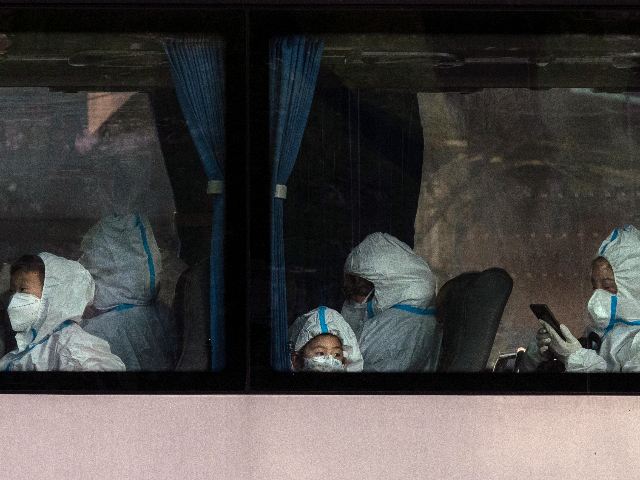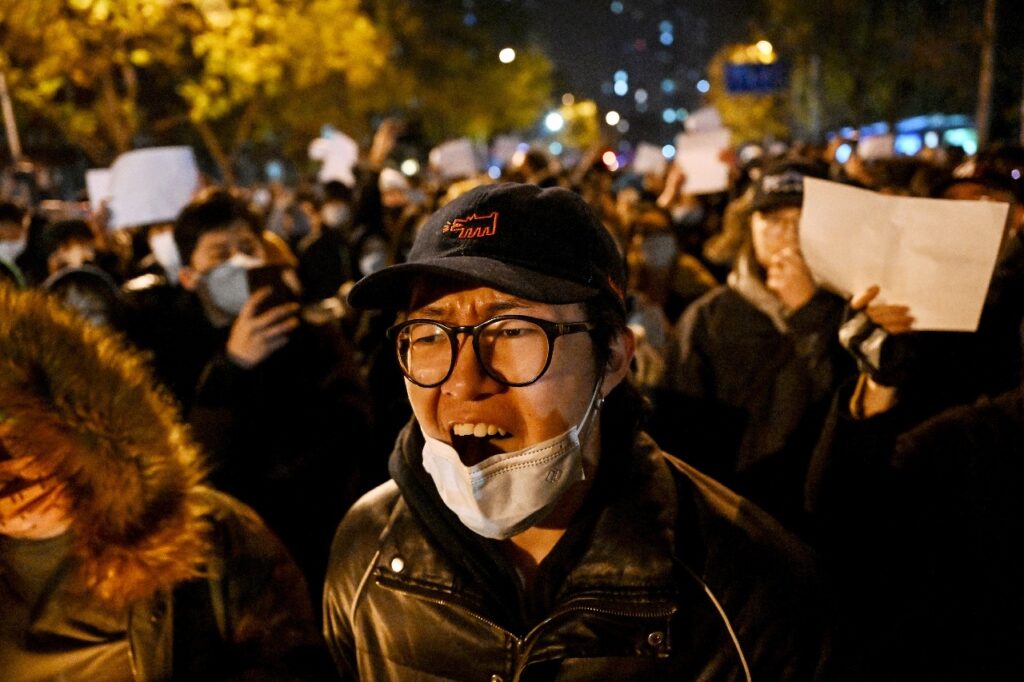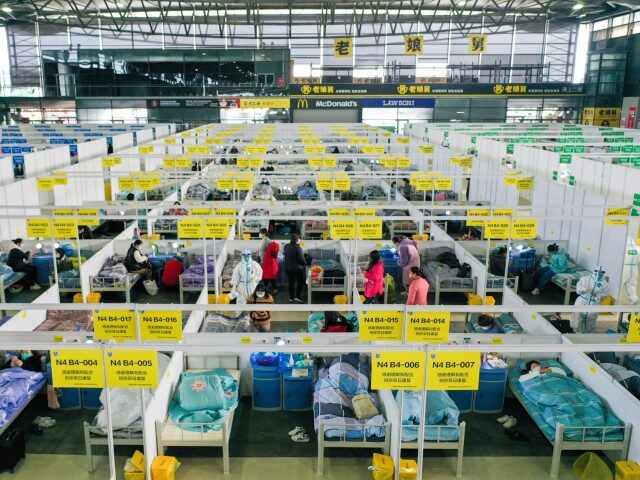China’s state-run Global Times on Thursday reported quarantine camps have been built near large cities like Hangzhou to deal with the immense surge of coronavirus infections. Residence in these camps is optional, at least for the time being.
According to Hangzhou health officials quoted by the Global Times, district and county administrations were ordered to build camps with a combined total of 16,030 beds “for people who opt for collective quarantine.”
Hangzhou is the capital of China’s eastern Zhejiang province, with a population of some 10 million, plus a fair number of tourists drawn by its scenic lakeside views.
In addition to the 16,000 quarantine beds, district officials also instructed hotels to begin offering “quarantine packages” for those who found the massive camps a little too grim, but did not wish to quarantine themselves at home. Participating hotels were given caps on room and board prices, and are required to have medical workers on site.
“Hangzhou officials said that residents can apply central quarantine [sic] via their neighborhood communities, and will be transferred to an appropriate quarantine site,” the Global Times said.
China’s huge and unpleasant quarantine camps were not “optional” during most of the pandemic. Dictator Xi Jinping herded thousands into the camps at gunpoint, and those who resisted were subjected to shocking police brutality. Children were ruthlessly separated from their parents. Quarantine enforcers were caught on video beating family pets to death after their owners were marched into the camps.

Residents, including children, wear protective clothing and masks as they wait on a bus outside a residential compound before leaving, as part of epidemic control to prevent the spread of COVID-19, on November 15, 2022, in Beijing, China. (Kevin Frayer/Getty Images)
Chinese citizens became absolutely terrified of Xi’s quarantine camps, blaming them for making the pandemic even worse by forcing people who failed a single virus test into close proximity with people who were obviously sick and highly contagious.
In November, the capital city of Beijing was largely shut down by an ostensibly mild coronavirus outbreak because people were frightened not of Chinese coronavirus, but of failing a virus test or getting flagged as a “close contact” of an infected person, which could get them sent to the hellish camps. Some Beijing residents decided they would rather go hungry than risk shopping for food.
“Don’t get tested if you don’t need to go out. Getting a Covid test is now the biggest chance to get infected or put yourself at risk,” one Beijing resident advised on social media.
These fears intensified as the authoritarian central government began experimenting with making political adjustments to health tracking codes, falsely classifying some citizens as infected or high-risk just to keep them off the streets.
Quarantine camps, and the incredibly aggressive testing programs that sent so many people to them, figured prominently in the massive anti-lockdown protests that swept China at the end of November. When the protests prodded Chinese officials to relent on their lockdown-happy “zero Covid” policy, citizens expressed relief that they no longer had to worry about taking half a dozen virus tests a day, failing one of them, and getting marched off to the camps.

Protesters march along a street during a rally for the victims of a deadly fire as well as a protest against China’s harsh Covid-19 restrictions in Beijing on November 28, 2022. – A deadly fire on November 24, 2022 in Urumqi, the capital of northwest China’s Xinjiang region, has become a fresh catalyst for public anger, with many blaming Covid lockdowns for hampering rescue efforts, as hundreds of people took to the streets in China’s major cities on November 27, 2022, to protest against the country’s zero-Covid policy in a rare outpouring of public anger against the state. Authorities deny the claims. (Noel CELIS / AFP)

COMMENTS
Please let us know if you're having issues with commenting.